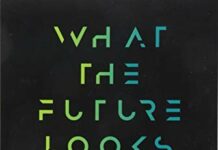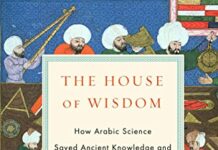
Ebook Info
- Published: 2012
- Number of pages: 306 pages
- Format: PDF
- File Size: 3.32 MB
- Authors: Jim Al-Khalili
Description
A fun and fascinating look at great scientific paradoxes.Throughout history, scientists have come up with theories and ideas that just don’t seem to make sense. These we call paradoxes. The paradoxes Al-Khalili offers are drawn chiefly from physics and astronomy and represent those that have stumped some of the finest minds. For example, how can a cat be both dead and alive at the same time? Why will Achilles never beat a tortoise in a race, no matter how fast he runs? And how can a person be ten years older than his twin?With elegant explanations that bring the reader inside the mind of those who’ve developed them, Al-Khalili helps us to see that, in fact, paradoxes can be solved if seen from the right angle. Just as surely as Al-Khalili narrates the enduring fascination of these classic paradoxes, he reveals their underlying logic. In doing so, he brings to life a select group of the most exciting concepts in human knowledge. Paradox is mind-expanding fun.
User’s Reviews
Reviews from Amazon users which were colected at the time this book was published on the website:
⭐I enjoyed this book and found that it helped to clarify the paradoxes discussed in this book (see below). In doing so, it also provided a good overview of many of the conundrums that relativity theory and quantum mechanics have created. I give this book 5-stars and recommend it to people, like myself (a retired research metallurgist with a long ago exposure to modern phyaics in graduate school and further reading since I have retired), which have some understanding of the ideas presented in this book, but with the reservation that those with little or no background in the subjects covered are likely to view the book less positively.What is in this book-This book discusses the most important paradoxes created by modern physics, plus two introductory chapters that discusses some logic paradoxes. The chapters and their content are as follows:Chapter 1 – The Game Show Paradox – Monty Hall and how his knowledge of what is behind the three curtains alters the odds when he lets a contestant switch from their initial choice to another one.Chapter 2 – Achilles and the Tortoise – Classical paradoxes and how they are resolved.Chapter 3 – Olbers’ Paradox – Why is the sky not covered with stars, making the nighttime as bright as the daytime? The physics here is about the finite nature of the visible universe and the ideas concerning the beginning and expansion of the universe.Chapter 4 – Maxell’s Demon – The physics of the second law of thermodynamics is discussed in this chapter.Chapter 5 – The Pole in the Barn Paradox – Special relativity and length contraction are discussed in this chapter.Chapter 6 – The Paradox of Twins – This chapter focuses on special relativity and time dilation.Chapter 7 – The Grandfather Paradox – This chapter focuses on relativity theory and the possibility of travel back in time that the theory allows for.Chapter 8 – The Paradox of Laplace’s Demon – This chapter deals with the ideas of a mechanically deterministic universe and free will.Chapter 9 – The Paradox of Schrodinger’s Cat – The basic paradox of Quantum Mechanics and the question of entanglement is discussed in this chapter.Chapter 10 – Fermi’s Paradox – Fermi asked – if there are aliens from other planets why haven’t they visited (at least as far as most people are concerned) or have given any indication of their existence? The physics is about the possibilities of life on other planets.Chapter 11 – Remaining questions – These are not paradoxes, but questions which the author thinks will be answered in his lifetime, answered but not in the foreseeable future and questions that may never be answered. This chapter is only 6-pages long and only lists the questions, but does not discuss them.
⭐I picked this book up for two reasons, the first being the topic (i.e., paradoxes), and the second being that Jim Al-Khalili is my favorite popular physics presenter, with his BBC history of physics content. After finishing it, I can say that the book really doesn’t bear his mark, at all. I’ll speak to this more.The paradoxes he covers are the Monty Hall Problem, Zeno’s paradoxes, Olber’s paradox, Maxwell’s Demon, The Pole-Barn paradox in special relativity, the twin paradox, the grandfather paradox, Laplace’s Demon, Schrodinger’s cat paradox, and Fermi’s paradox. The paradoxes were selected, it seems, because al-Khalili believes they are all resolved. Naturally, he’s a physicist, and he’s approach all of these from a physicist’s perspective. Unfortunately, his treatment of all of these paradoxes is very superficial. Given his depthy films, which are not superficial, I expected much more. it is usually the case where non-fiction on screen is superficial by comparison to a written version, so I simply assumed this book would teach me something. It really didn’t. Reviewing, I found that I highlighted next to none of the text. I think this book suffers by virtue of the fact that he’s truly aiming for an audience that is no technically inclined. The only problem with that is that these paradoxes need a little technical exfoliation to fully appreciate, and also to fully establish a resolution. For instance, there’s no rigor in his treatment of the Monty Hall problem. I already very well understood the issue and solution, and I thought to myself that just a couple of lines of Bayesian probability would put the heart of most to rest. Nick Huggett has written amazing popular philosophy of physics books, and he puts little chunks of technical content inside of a square that may be skipped by those uninterested. I think al-Khalili needed to do something like that here. Trying to convince the layperson of how the problem is resolved using pictures is not all that compelling.I also think that the book was written in a bit of a messy way. I felt like the text was repeatedly circling back to some point that was already made, or there was the introduction of some new info, which was inserted out of order, and so the text had to recapitulate some thought. Another point on the book’s construction: there were illustrations that were well placed, but there were also a few places where the text very badly need an illustration. I feel like the book’s publication may have been rushed.From a technical standpoint, I think al-Khalili was very clumsy with the theoretical portions of the book that bordered on philosophy or were strictly philosophical. Here are two examples, but there are many. The first example I’ll give is the grandfather’s paradox. He never even made mention of David Lewis’ famous paper on the topic, or its resolution. In a metaphysics course centered about physics, this was the very first paper we read. al-Khalili was just clumsy, in this regard, or completely out of his depth. Another example was in Zeno’s paradoxes, particularly in regard to the paradox of the arrow. He never cited, what is now considered to be, the modern accepted solution to the paradox, called the ‘at-at theory’, developed by Wesley Salmon. There were other ways to deal with these paradoxes of motion, which would have meant mentioning the thoughts of Adolf Grunbaum, for one. I’m not suggesting that al-Khalili had to turn this into a philosophy book, but I think it is necessary to address considerations of physics-trained philosophers, who made very on-point arguments regarding the paradoxes, and even developed some of the uncited intellectual machinery used in the text. I can honestly say, I don’t know whether al-Khalili really and truly understood what was at issue in the paradox of the arrow.One final complaint I have is that the paradoxes chosen for this book were a little less interesting than if he would have included unsolved paradoxes in physics. I was hoping to see what his thoughts were on, and what he know about, Ehrenfest’s paradox, to name just one.All in all, I don’t discourage anyone from reading or buying this book; but I will say that anyone with a decent undergraduate education will be able to leaf through this book with great speed and without much care, all the while still getting out everything it has to offer. I also don’t recommend it to anyone. Instead, I think reading online articles on these topics is better than reading this book. I’d recommend Scientific American articles, (free!) Stanford Encyclopedia of Philosophy articles, and so forth. I will buy other al-Khalili books, because I think he generally produces great content. At the time of writing this, I am looking forward to his book on quantum mechanics in biology and in the understanding of life.
⭐First I will say that I am a relatively harsh critic. I would only give 5 stars to a book which I consider to be a “Break Through” type book which this is not. The book does not provide any new theories or insight, but rather is a review of many interesting paradoxes (& some are not really paradoxes) that have existed in physics. However, that being said, this book is very interesting and well written.The author starts off discussing several simple paradoxes that do not deal with physics. One example is the “Monty Hall Paradox” which comes from the TV show “Let’s make a Deal.” The author stated that considerable effort went into resolving this paradox, which I found puzzling since it seemed to be relatively simple.After this first chapter, the book moved into far more interesting topics. These included: paradoxes created when traveling close to the speed of light, Time travel, Parallel Universes and the existence of ET.Having an advanced technical degree, I would have preferred the author doing a deeper dive into the math; however, this author seemed to purposely avoid this. Rather, he went into a great deal of effort to explain his reasoning to an audience lacking any technical background.Over all I would recommend this book to anyone (at any level) who is interested in physics.
⭐I always enjoy listening and watching Jim Al-Khalili because he has a really relaxed but informative presentation style. This is the first book I have bought by him and it won’t be the last because he uses the same approach. Aimed at the interested but not necessarily ‘expert’ person (and I am definately at the bottom of the food chain when it comes to physics) he tackles really complex ideas in his usual style to entertain and inform his reader.
⭐Really appreciate Jim Al-Khalili. My brother has a staggering IQ. Unfortunately I have the IQ of a monkey. Life is cruel. However thanks to the clear way this is all explained…had no problems. Going to put ‘Jim’ on my list of favourite planet Earth scientists. What, you don’t believe me when I say this book is wonderful? Well, suck it and see.;)
⭐Both on TV and in print Al-Khalili has the knack of making difficult ideas comprehensible to the average viewer or reader. I particularly liked his treatment of the the Shrodinger’s cat thought experiment. A lot of other accounts, but not Al-Khalili’s, seem to miss the basic point that Shrodinger was not arguing that the cat was dead and alive at the same time, but presenting a ‘reductio ad absurdum’ of the interpretation of quantum theory which would have led to this conclusion.
⭐Fun and enjoyable tour of some great mind-bending scientific puzzles! Written in a clear and accessible style, too.
⭐I do like his style of explaining things, and have enjoyed his documentaries (particularly “everything and nothing”). So having read a few pages of the kindle sample, I bought the whole lot and it has a been a stimulating brain teasing page turner. I do love apparently-paradoxical puzzles, and Jim Al Khalili presents us witty a range from the simplest to the most mind bending.
Keywords
Free Download Paradox: The Nine Greatest Enigmas in Physics in PDF format
Paradox: The Nine Greatest Enigmas in Physics PDF Free Download
Download Paradox: The Nine Greatest Enigmas in Physics 2012 PDF Free
Paradox: The Nine Greatest Enigmas in Physics 2012 PDF Free Download
Download Paradox: The Nine Greatest Enigmas in Physics PDF
Free Download Ebook Paradox: The Nine Greatest Enigmas in Physics




